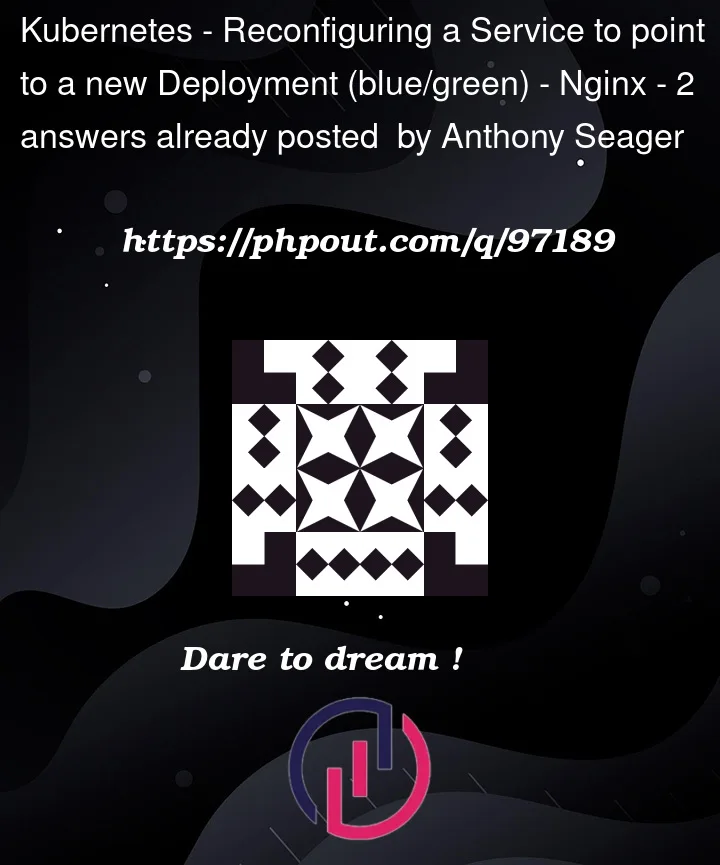I’m following along with a video explaining blue/green Deployments in Kubernetes. They have a simple example with a Deployment named blue-nginx and another named green-nginx.
The blue Deployment is exposed via a Service named bgnginx. To transfer traffic from the blue deployment to the green deployment, the Service is deleted and the green deployment is exposed via a Service with the same name. This is done with the following one-liner:
kubectl delete svc bgnginx; kubectl expose deploy green-nginx --port=80 --name=bgnginx
Obviously, this works successfully. However, I’m wondering why they don’t just use kubectl edit to change the labels in the Service instead of deleting and recreating it. If I edit bgnginx and set .metadata.labels.app & .spec.selector.app to green-nginx it achieves the same thing.
Is there a benefit to deleting and recreating the Service, or am I safe just editing it?




2
Answers
Yes, you can follow the
kubectl edit svcand edit the labels & selector there.it’s fine, however YAML and other option is suggested due to kubectl edit is error-prone approach. you might face indentation issues.
It’s more about following best practices, and you have YAML declarative file handy with version control if managing.
The problem with
kubectl editis that it requires a human to operate a text editor. This is a little inefficient and things do occasionally go wrong.I suspect the reason your writeup wants you to
kubectl deletethe Service first is that thekubectl exposecommand will fail if it already exists. But as @HarshManvar suggests in their answer, a better approach is to have an actual YAML file checked into source controlYou should be able to
kubectl apply -f service.yamlto deploy it into the cluster, or a tool can do that automatically.The problem here is that you still have to edit the YAML file (or in principle you can do it with
sed) and swapping the deployment would result in an extra commit. You can use a tool like Helm that supports an extra templating layerIn Helm I might set this up with three separate Helm releases: the "blue" and "green" copies of your application, plus a separate top-level release that just contained the Service.
You can do similar things with other templating tools like ytt or overlay layers like Kustomize. The Service’s
selectors:don’t have to match its own metadata, and you could create a Service that matched both copies of the application, maybe for a canary pattern rather than a blue/green deployment.